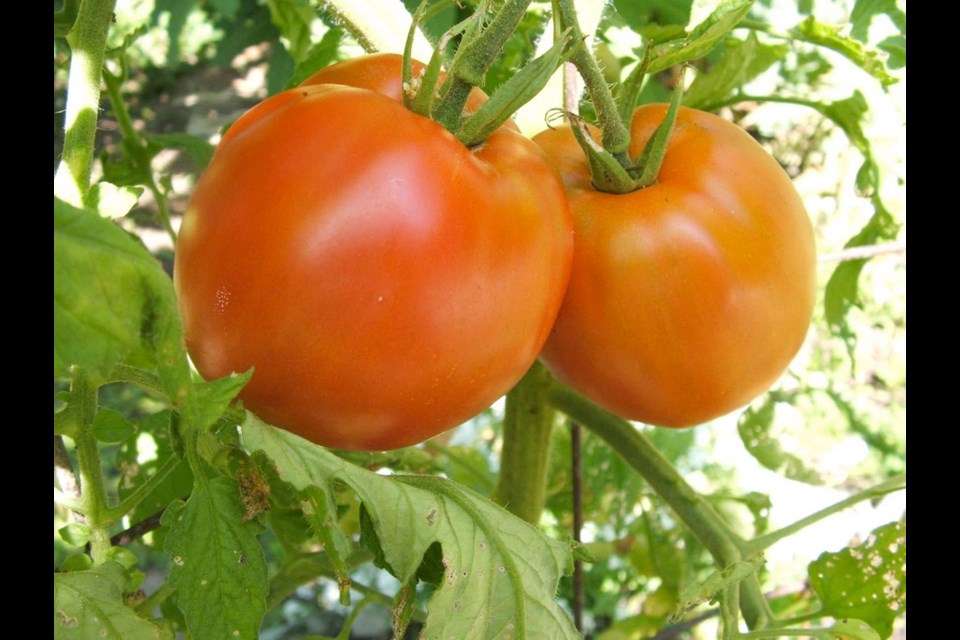It has been an odd summer. July, usually my favourite summer month, was less than ideal with its muggy days sapping energy and turning vigorous gardening sessions into sweaty events.
Significant rain at the beginning of August seemed to clear the air and the warm, sunny weather that followed brought comfort levels up several notches, for a while.
Periodic rainfall in a usually parched summer was spotty. Several times I heard from people in nearby districts rejoicing at the lovely rain while my immediate area remained dry. Still, there was enough rain here and there on our island and in the province to minimize forest fire events that in recent years had made for smoky summers.
No matter the unexpected character of the weather, summer has yielded its usual mix of successes and disappointments, surprises, and things learned.
Playing with space. The shortest length of sturdy wire fencing set up in my food garden is just over two metres high and three metres long. It is slightly bent to form a broad arc in a space roughly three metres across and 1.5 metres deep. The space is located at one end of a sunny vegetable plot.
In the spring, as I began thinking about plantings to grow up and around that piece of fencing, an idea struck: This could be a perfect site for an experiment in small-space gardening. I was curious to know how much food-bearing growth could be arranged in the limited area, and I began planning.
First, for close-spaced planting I knew the soil had to be fertile and of robust texture. I took time to prepare the plot thoroughly, clearing the soil surface and digging it over to remove any stray tree roots and debris.
Then, I mixed into the soil a generous layer of compost, a dusting of lime, and a scattering of a slow-release, natural-source fertilizer. The plot was ready for planting.
I began by sowing just a few seeds each of three climbing beans, which are reliably prodigious producers. I chose two varieties of runner beans that I wanted to compare, and a pole bean called Long Green Chinese from Salt Spring Seeds. This Chinese heirloom has become a favourite in recent years for its slender shape, its dense yet tender flesh, and its fine taste.
Spacing the three small bean plantings at both ends and at the middle of the wire fencing’s outer side left two spaces ample enough for two staking tomatoes to be trained against the wire.
For these spaces I chose two heirloom tomatoes — Japanese Trifele Black and Salvaterra’s Select, both big, beautiful tomatoes of impeccable quality. Those plants gave me my first fully ripe, wonderfully tasty tomatoes.
Salvaterra’s Select is meaty-textured paste, or sauce, tomato with a sweet, tangy flavour. Japanese Trifele Black is dark-skinned, juicy and full-flavoured. Seeds for both tomatoes are available from Seed Savers Exchange. Salt Spring Seeds lists Japanese Trifele Black.
At the base of the wire’s inner side I spaced three climbing cucumber plants. For this experiment I chose to plant Sweet Success, a longtime favourite variety that reliably produces the earliest and best cucumbers in my garden. The plants have provided me with a non-stop supply of long, perfectly formed, sweet and tasty fruits. Seed sources are William Dam and Lindenberg Seeds. Transplants can sometimes be found at local garden centres in the spring.
In the small space created in the middle of the slightly curved fencing I planted two AmaRosa seed potatoes. This productive variety yields red-fleshed “fingerling” tubers with a rich potato flavour.
To complete the fully packed plot and to add tasty greens and flowers to follow, I seeded cilantro along the outside edge of the space housing the tall wire arc.
GARDEN EVENTS
Gordon Head meeting. The Gordon Head Garden Club will meet on Monday at 7 p.m. in Gordon Head United Church, 4201 Tyndall Ave. in Saanich. Don Hare from the Coastal Invasive Species Committee will speak about invasive species in our community and in our gardens. Visitors are welcome at no charge.
View Royal meeting. The View Royal Garden Club is celebrating its 70th year with a special event featuring Linda Gilkeson, local entomologist and educator, speaking on resilient gardens in the presence of climate change on Wednesday at 7:30 p.m. in Wheely Hall, 500 Admirals Rd. in Esquimalt. The entrance is off Lyall St. Space is limited. Advance tickets for the event are available for $10 at all GardenWorks Centres.



